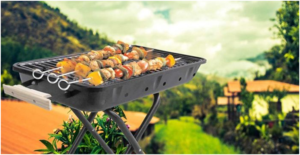
Most Foreigners have a skewed idea of Indian cooking. It’s always just “curry” or “naan” but Indian cooking has a notably large variety, more so than anywhere else in the world. What is showcased in the menu of restaurants is only a small fraction of what’s depicted as the most in rage or loved. The categories can range from simple to complex; some can be whipped up in a matter of minutes while others tend to be a lot more elaborate and ostentatious.
India for the most part, is a vegetarian country. Our vegetables and grains makes for an essential part of our meal. In any Indian household, there is an array of Indian flatbreads like roti, naan, chapati, puri, dosas etc. With continued practice and incorporation of useful tips, it’s actually quite easy to learn the knack of making these foodstuffs. But just you wait—Indian cuisine is so vast that no matter how much you learn, it feels like you’ve barely scratched the surface.
Now what exactly is roti? It is basically the Indian adaption of bread. It is unleavened; meaning that you don’t have to use yeast or any such leavening agent to make it puff up. It is cooked on a griddle which goes by the name tawa in India. The tawa is a flat concave or convex shaped frying pan that is typically made out of metal like steel, aluminium, cast iron etc.
The roti is generally accompanied with a dip that could comprise of vegetable fry, curry, chutney, dhal or a host of other supplements. The different kinds of rotis are based on the ingredients used and the manner of cooking. Since India chiefly depends on a plant based diet, we have been known for growing a variety of grains across the country.
Whole wheat is one of the most common grains but there are also others like rice, buckwheat, millet, corn etc and legumes such as lentils is used for making pancake preparations like dosa.
Pakistan, Iran and India are homes to significant markets of Australian wheat. Since the past decade, Australia has exported over 17 million tonnes of wheat to these three countries. The Middle East owns a noteworthy part of this heritage as well, especially in the making of Tandoori breads. It is legendarily known as roti in Pakistan, Naan in India and Taftoon in Iran.
Roti making is a painstaking process. In an average house of four people, it would routinely involve the flattening of atleast about 15 wheat rotis. This can be easily achieved through devices like Rotimatic, the world’s first fully automatic roti-maker that is both aesthetically pleasing and abundantly practical. Although it comes with a lavish price tag, it’s a lifetime investment that is worth every penny.
Rotimatic reviews online can give the public a substantial view on how the product works. Their website has a real time roti-count that is steadily increasing in thousands! That speaks volumes on the effectively of the product.



